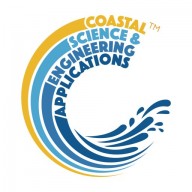| Asmita | ASMITA stands for Aggregated Scale Morphological Interaction between Tidal basin and Adjacent coast. The model is used to examine long-tern morphological change in tidal inlets and estuaries. Rather than schematise a grid of the real-world bathymetry, the model uses elements that represent geomorphological components of the system such as channels, tidal flats, deltas, saltmarshes, etc. As such the model address changes to the sediment volumes in the estuary over long time scales (decades, centuries and aeons). | Manual |
| ChannelForm | ChannelForm provides a framework for studying estuary and inlet morphological landforms in the context of the surrounding landscape (valley and flood plain). A set of tools allow digital terrain models (DTMs) to be created from models or imported. Channel and Valley forms can be combined to create a landscape setting, which can also include a shoreface and channel meanders. A kinematic model is used to consider the migration of the channel under the influence of sea level change, taking account of sediment supply from the sea and river. | Manual |
| CoastalTools | The CoastalTools package was originally developed to access and manipulate coastal data, such as held by the Channel Coastal Observatory (CCO) and the British Oceanographic Data Centre (BODC) and has since been extended to handle other common data formats. CoastalTools provides a User Interface for time series data analysis, with many of the formats that are in routine use in the UK and elsewhere provided for in the data loading tools. Several models that use the measured data as input are also provided. These provide the ability to estimate near shore wave parameters and properties that describe how the beaches are changing over time. The models generally use simple algorithms to transform the data and are not intended to be a substitute for more detailed coastal process modelling. The focus is very much on providing a means to rapidly explore the data that is now available from national archives. | Manual |
| CSTmodel | This is a quasi-analytical hydraulic model for convergent tidal channels. It computes the mean tide level, high and low water levels, tidal velocity amplitude and river velocity along the length of the estuary using the quasi-analytical model of Cai, Savenije and Toffolon (hence the CST model) as described in (Savenije, 2005; Cai, 2014). | Manual |
| ModelSkill | ModelSkill enables data to be loaded and then compared on a Taylor diagram. This form of plot was originally proposed for the comparison of model timeseries output (Taylor, 2001) and has subsequently been adapted for the comparison of morphological model outputs (Bosboom and Reniers, 2014; Bosboom et al., 2014). In this implementation the Taylor approach is used but modified in line with Bosboom of the analysis of grid and mesh data. The options include the ability to create and add points to a Taylor diagram, output the results to the Clipboard, and estimate global and local skill scores. | Manual |
| ModelUI | ModelUI provides a demonstration using the muitoolbox of how to create bespoke interfaces for modelling applications that produce some combination of graphical and/or time series outputs. The muitoolbox is designed to enable the rapid prototyping of models by allowing the model developer to focus on the model, rather than the functional or operational needs of the software package itself. To this end, the UI provides a standard interface with drop-down menus, tools to open and close files, keep track of model runs, provide a rapid means to implement model set-up and data import and export, derivation of new variables, and some basic plotting and statistical tools. The ModelUI package includes three example models to illustrate how to create and modify the UI for different applications. These include:
– VerticalProfile to illustrate the basic UI with a model producing spatial data;
– SimpleTide to illustrate handling timeseries data in a similar UI;
– Diffusion2D to illustrate how to handle time plus 2 or 3 space dimensions. | Manual |
| MRBreach | MRBreach is an App to support the design of breaches in sea walls that are commonly required for managed realignment schemes. These schemes aim to increase the area of intertidal by allowing the sea back into areas of land that have been protected by sea defences in the past. It is usually impractical to remove the entire sea wall. There is therefore a need to determine the size of breach required to allow tidal exchange into and out of the site. In such design there is also the practical consideration of being able to construct the breach safely, in the time available over a tidal cycle. This piece of software implements a method proposed for the design of such breaches based on creating one, or more, stable channels into the site. | Manual |
| SedTools | Loads settling column output files generates sediment grain size distributions and summary data using the method developed by Urs Neumeier at the University of Southampton (Neumeier, 2005). | Manual |
| WaveRayModel | Wave ray tracing model to generate forward and backward tracking rays over a coastal bathymetry and transfer wave data to a neashore point. | Manual |

